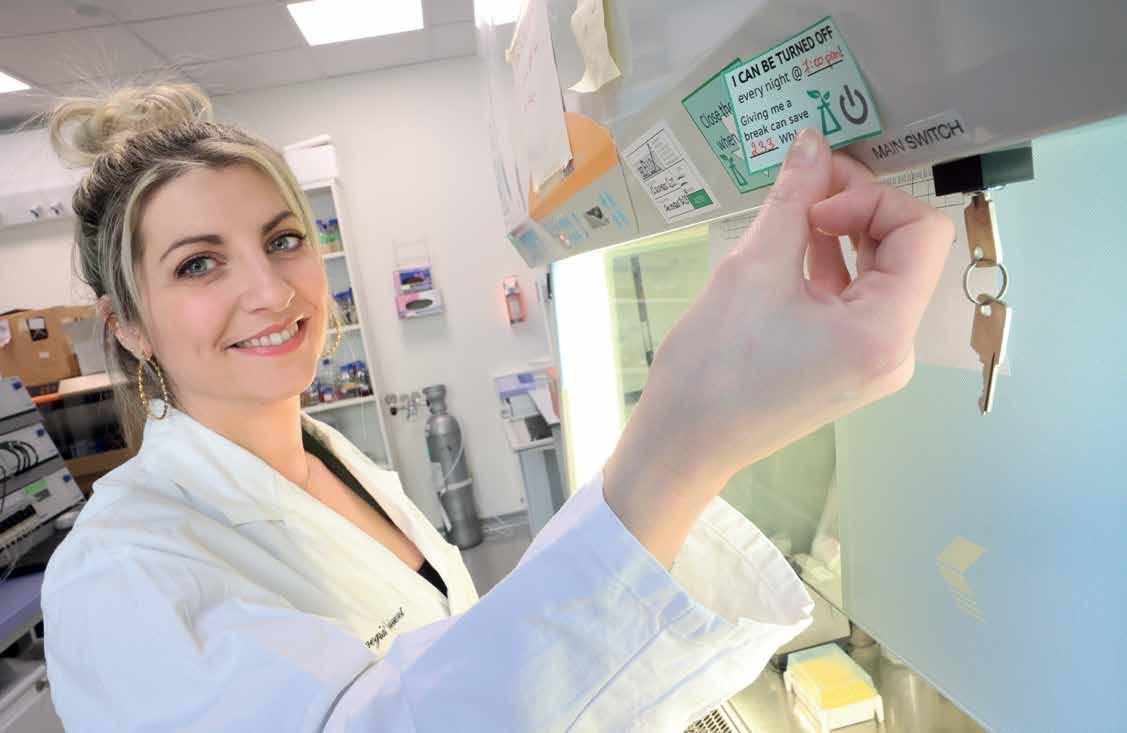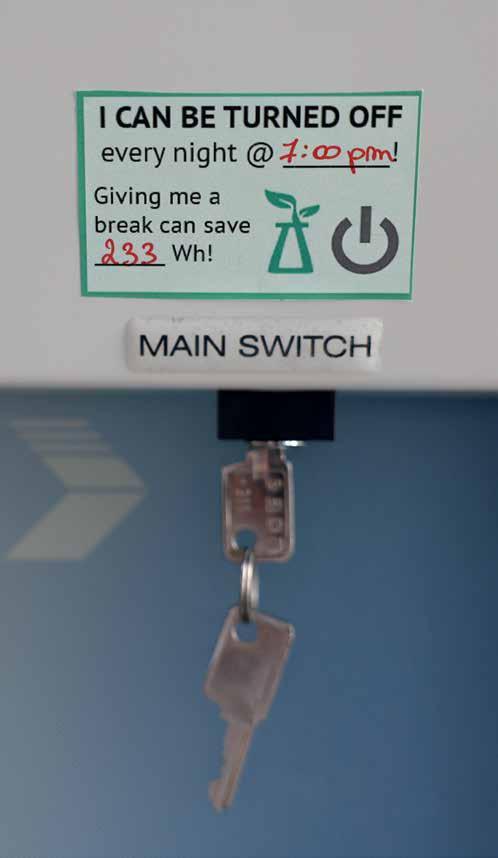
2 minute read
Greener life science labs
Life science research activities go through an astronomical amount of plasticware – about 5.5 million tonnes per year worldwide. Waste-sorting directly in the laboratories is part of greening the labs but is not the only eco-friendly practice that laboratories can resort to. The lab support team at the LCSB has prioritised sustainability since the beginning.
Repairing instead of replacing and having efficient inventory software are only a few examples of initiatives already in place. “But we felt that we could do even more: for example, optimise the use of energy-intensive equipment,” explains Annegrät Daujeumont, the research support technician who oversees the Green Lab certification project at the LCSB. “We want to develop an eco-friendly attitude within the centre so that the effects on the environment are considered in every decision we make.”
Advertisement
To drive this behavioural change, the lab support team is implementing more structured actions, starting with a certification programme. Through a survey, “My Green Lab”, a non-profit organisation, assessed the needs of the LCSB in terms of sustainability. Their analysis provided a framework for improvements over the following months. A working group, composed of lab technicians, safety officers and scientists, was then created, allowing a collective reflection on how to best implement new eco-friendly practices.
Keeping energy consumption in check was one of the issues the LCSB team decided to tackle heads-on. “A good place to start is to identify which instruments need to be always switched on and which ones can be put on timers,” details Daujeumont. “We carried out this assessment on a case-by-case basis, in order to have the smallest possible impact on the daily organisation of the researchers and the quality of their work.”

Joining the Freezer Challenge, an international competition designed to promote best practices in cold storage management, was also a good way to motivate the LCSB team to optimise the use of fridges and freezers. Actions included defrosting, cleaning out unneeded samples and shoring up sample-tracking methods. As a result, some appliances could be turned off, extending the lifespan of the equipment while significantly reducing the energy consumption linked to cold storage.
Green chemistry was another target. The goal being to challenge the use of certain substances and propose less harmful alternatives that limit energy-consuming waste treatment. “New software enables us to easily identify dangerous chemicals and to then systemically initiate a discussion between researchers and the safety officers,” describes Annegrät Daujeumont.
Other issues can be more challenging to address, such as the limitation of plastic waste and ethical sourcing. “The whole process will take time of course, but the progress already achieved makes it all worth it,” she concludes.
Thanks to this recent team effort, the LCSB has been reassessed by My Green Lab and is now fully certified, with a Gold certification reflecting that over 60% of green lab best practices have been adopted by the centre. ¢










